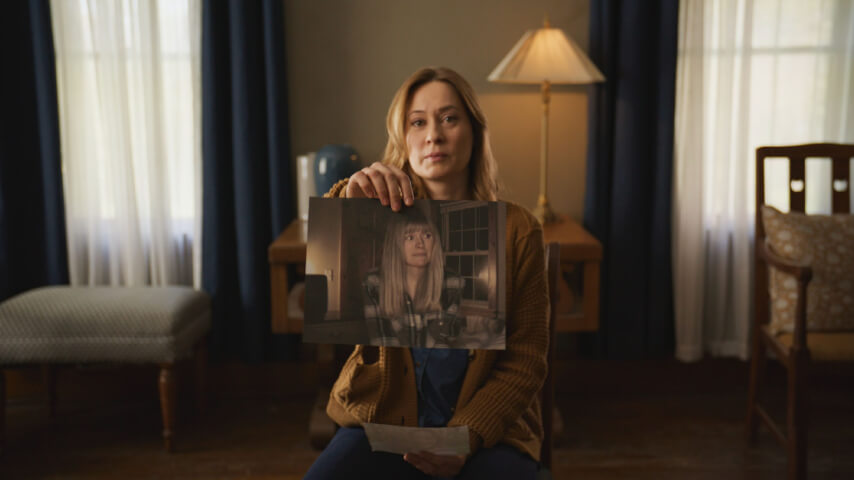Shelby Oaks fumbles Chris Stuckmann's collection of horror references
Critic and YouTuber Chris Stuckmann makes his feature debut with a horror film composed of mixed messages, tones, and reference points.
Photo by Fantasia Film Festival
Shelby Oaks is the highly anticipated debut film from Chris Stuckmann, the film critic and YouTube sensation who has parlayed his love of genre film (and his many subscribers, via Kickstarter) into bringing this story of revenge and redemption to the big screen. Promising to tap the font of found footage films from the ‘90s and 2000s, as well as a myriad of occultist horror and thriller flicks from the ‘60s to the ‘80s, on paper there’s plenty here to pique the interest of genre fans and general audiences alike. Unfortunately, even taking into consideration the fact that this is a first time filmmaker, the result is a mass of half-baked ideas and poorly executed tonal shifts, squandering the promise of its early premise and devolving into a middling mess.
The film opens with Mia (Camille Sullivan) being interviewed for a documentary about her younger sister Riley (Sarah Durn), one of four paranormal investigators that disappeared under strange circumstances in 2008, unleashing a media storm and eliciting the fanatical support of a nascent online community seeking answers to the mystery. The group’s last images were captured in Darke County in the abandoned Ohio town of Shelby Oaks, where a dilapidated prison and rotted-out amusement park provide the last known whereabouts for this intrepid team. This promising conceit is spelled out in a pre-credit sequence, situating the narrative within a true crime-like idiom that’s allowed to develop considerably before both the tone and the aspect ratio shift.
Shelby Oaks is certainly handsome: Cinematographer Andrew Scott Baird’s photography captures the dilapidated environs as well as the lo-fi, mini-DV aesthetic in compelling ways, and Christopher Hare’s production design is equally rich in palpably moldy, dank detail. There’s also something pure about how the early days of online video making are employed here, and Stuckmann’s experience in this arena is illustrated in ways both overt and subtle. These are by far the most effective and, frankly, exhilarating moments of the film, reminding of the analytic specificity of David Fincher’s Seven, or even Brett Morgen’s June 17th, 1994 with its brashly constructed media montage. It’s clear that someone well-versed in the intricacies of online life over the last few decades is at the helm of this telling, and it’s easily the most accomplished part of Shelby Oaks’ presentation.
The film also provides a mix of references, but from the outset the most obvious connection for its shtick is the massively influential Blair Witch Project. The idea of being lost in the woods, with the events captured entirely on handycam, felt truly groundbreaking in a world before ubiquitous mobile phone cameras. Yet some of the primary satanic children birthed from Blair Witch’s success were the “barfcam” flicks. Eschewing tripods and/or narrative cohesion just to appear edgy, these follow-up films gleefully abandoned long-established formalism for the chaotic brand of the new. Meaning to instill an adrenalized rush, sweeping motion blur and staccato, machine-gun editing took advantage of newly minted non-linear computer editing, resulting in found footage gold rush. Shelby Oaks draws (at least initially) far more interesting lessons from Blair Witch’s dark tale.
